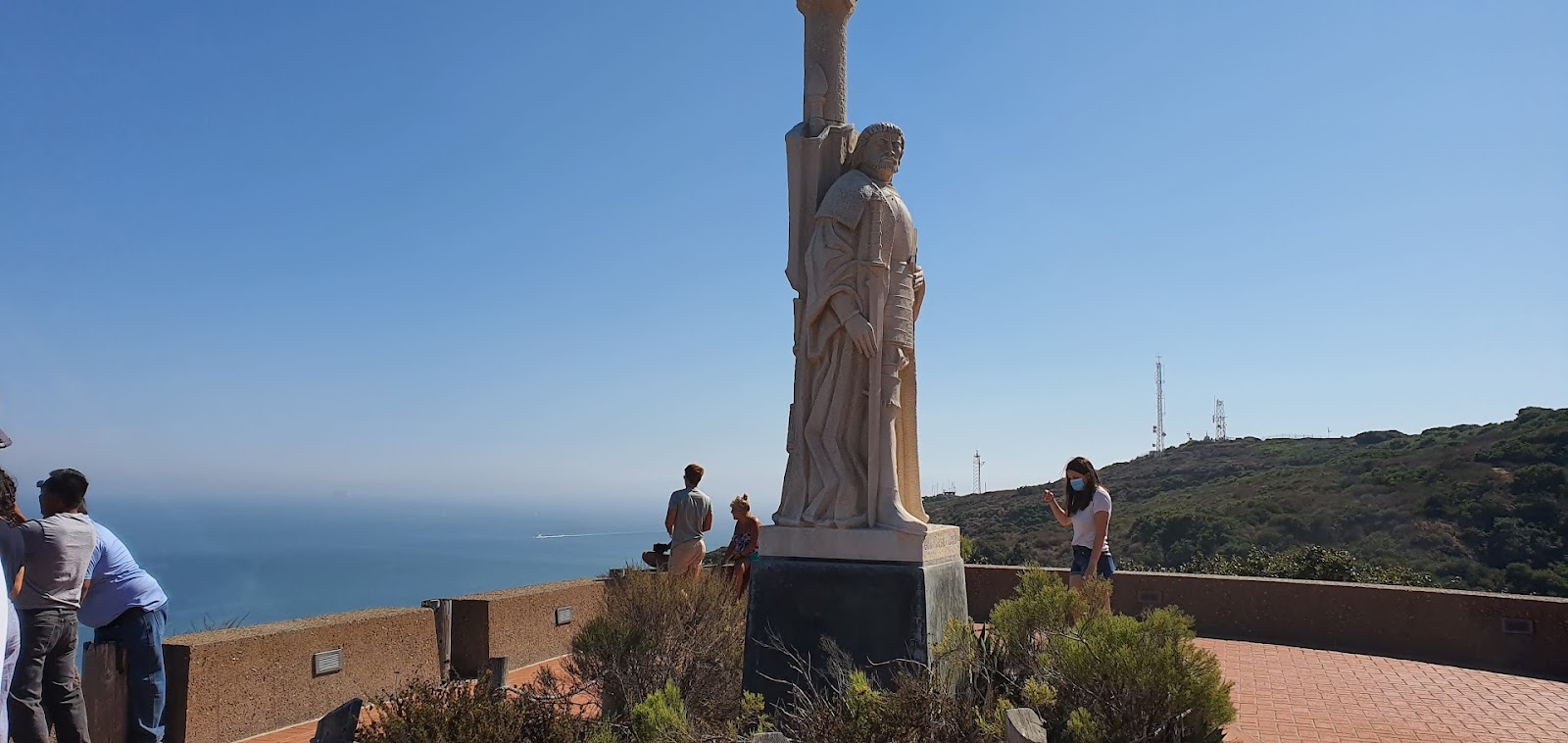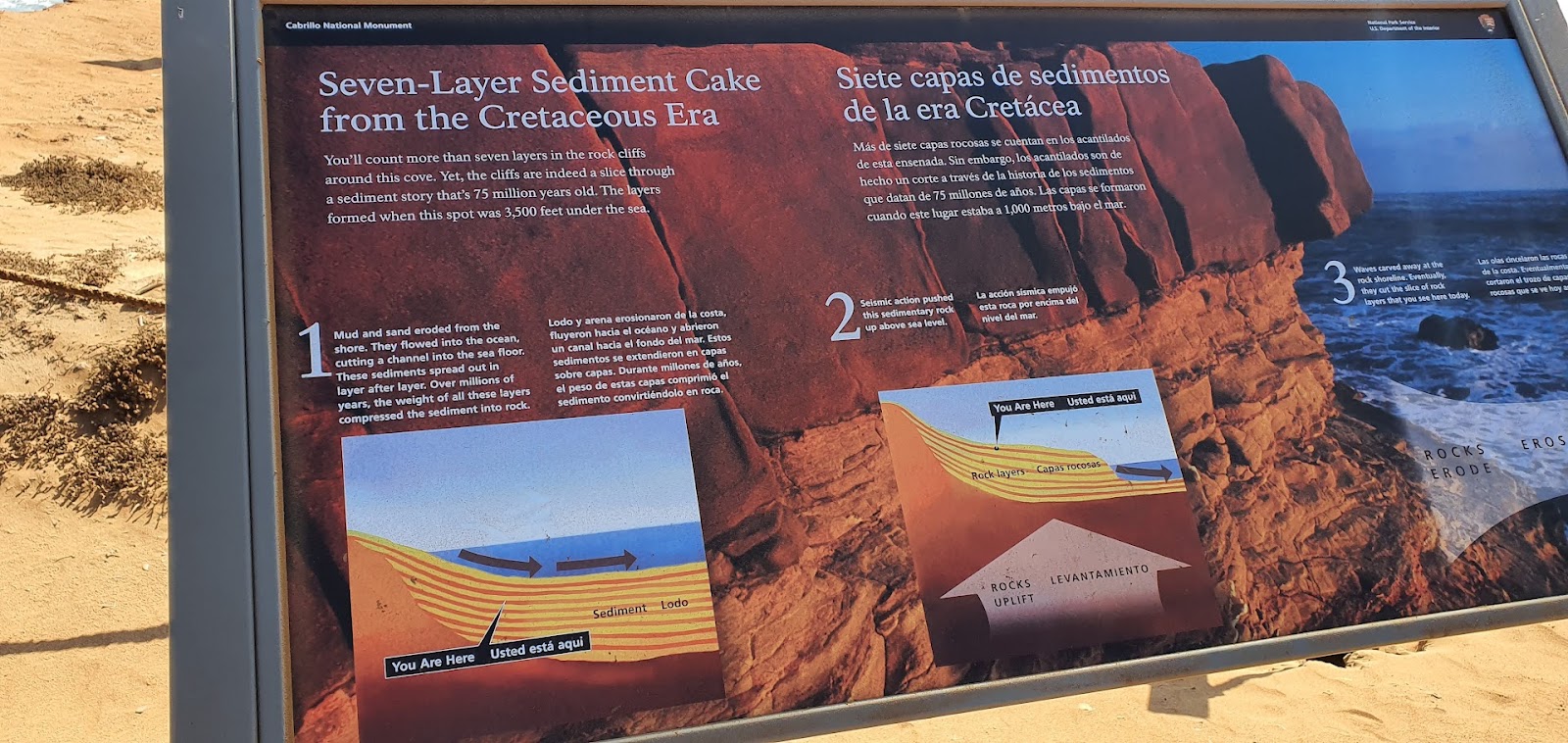We visited the Cabrillo National Monument one day, it is at the southern tip of Point Loma Peninsula in San Diego and commemorates landing of Juan Rodríguez Cabrillo at San Diego Bay on September 28, 1542.
It was the first time a European expedition had set foot on the West Coast of the United States. The site was designated as California Historical Landmark and also listed on the National Register of Historic Places
Before reaching the monument we went through the Point Loma Naval Base where there are now Navy commands, submarine base and a naval electronics laboratory, since 1852, the military has been an important part of Point Loma history
We first went to the Visitor Center which had plenty of souvenirs and facility to learn about the park's history
We could learn the day's weather readings and the time of low tide, there was an “Age of Exploration” exhibit
The auditorium offers several showings a day, and features three different films including: “In Search of Cabrillo,” “On the Edge of Land and Sea,” and “First Breath: Gray Whales.” The park's activities are supported by the Cabrillo National Monument Foundation, a private nonprofit organization which helps with educational activities and special projects
We later went to the park , the view was spell bounding, we could see San Diego's harbor and skyline, as well as Coronado and Naval Air Station North Island, we were lucky that there was no fog that day and our vision was as clear as glass
A wide expanse of the Pacific Ocean extended in front of our astounded eyes, boats were going around sketching white streaks on the ocean, with a little imagination one can see Tijuana, and Coronado Islands in the distance
We came across the famous statue of Cabrillo which has a very interesting story, in 1913 0.5 acres of land was allotted to construct a heroic statue of Juan Rodriguez Cabrillo, unfortunately the statue was possible only in 1949 for various reasons and the allotted area was used for gliding activities in 1929-1935 as the terrain and wind were suitable
A major renovation of the monument was undertaken in 1935, the deteriorating lighthouse was refurbished, a new road to the monument was built, and the Portuguese ambassador to the United States presented a bronze plaque, honoring Cabrillo as a "distinguished Portuguese navigator in the service of Spain"
In 1939 the Portuguese government commissioned a heroic statue of Cabrillo and donated it to the United States. The sandstone statue, executed by sculptor Alvaro de Bree, was 14 feet tall and weighed 6400 kg
It was shipped to San Diego but again was stored for several years on the grounds of the Naval Training Center San Diego, out of public view, and was finally installed at Cabrillo Monument in 1949. Unfortunately during this long travel the sandstone statue suffered damages because of its exposed position and was replaced in 1988 by a replica made of limestone.
The Old Point Loma Lighthouse is the highest point in the park and has been a San Diego icon since 1855. The lighthouse was closed in 1891, and a new one was opened at a lower elevation, because fog and low clouds often obscured the light at its location 129 meters above sea level. The old lighthouse is now a museum and we can enter it and view some of the living areas.
In the winter, migrating gray whales can be seen off the coast from the Whale Overlook station, near the old lighthouse. Established in 1950, this was the first public whale watching lookout point in the world.
We next went on to the tide pools, the car parking was through a very steep path with a stream of cars and parking entry was restricted
There were cute sign boards of a crab asking the tourists to leave all the sea shells behind in the tide pools as it needed them for its house
When we got down a surprising and different place awaited out there ,there were huge crumbling mountains lining the endless Pacific ocean with the low tide exposing the extensive rocky areas, there were boards giving us some information about the tidal pools
Rocky intertidal areas are some of the most diverse and extreme environments on Earth and are part of the shoreline connected and influenced by the ocean where the high and low tides occur along the shore.
There were depressions in the rocks with some crabs and snails also attached to the rocky substrate of the sandstone cliffs, boulder fields, and tidal shelves
We were warned not to step to the edges of the hills as they were fragile
The species that live in the tide pools include coralline algae, true limpets, barnacles , rock louse, sea lettuce, kelp fly , pink thatched barnacles, periwinkles, mussels , dead man's fingers sea bubbles, different varieties of snails, anemones, sandcastle worms, hermit crabs, rockweed, sea hare, sea urchin, feather boa kelp and octopus
We went cautiously down the hills and didn’t know whether to look at the vast ocean or look for the species of the enormous variety which lay in front of us
For the trekking enthusiasts the Bayside Trail offers a place to hike or relax
We spent an hour looking at the sea and the tide pools around us ,the mountains which were more than 75 million years old stood as mute spectators to the ageless time ,after all time and tide wait for no man or woman!
























No comments:
Post a Comment